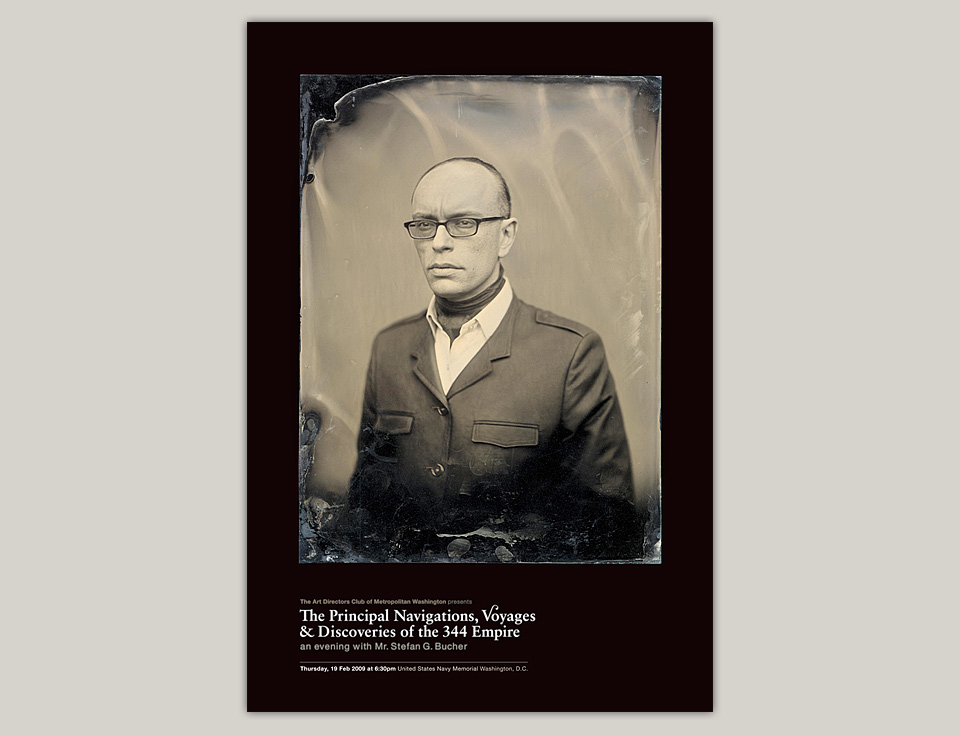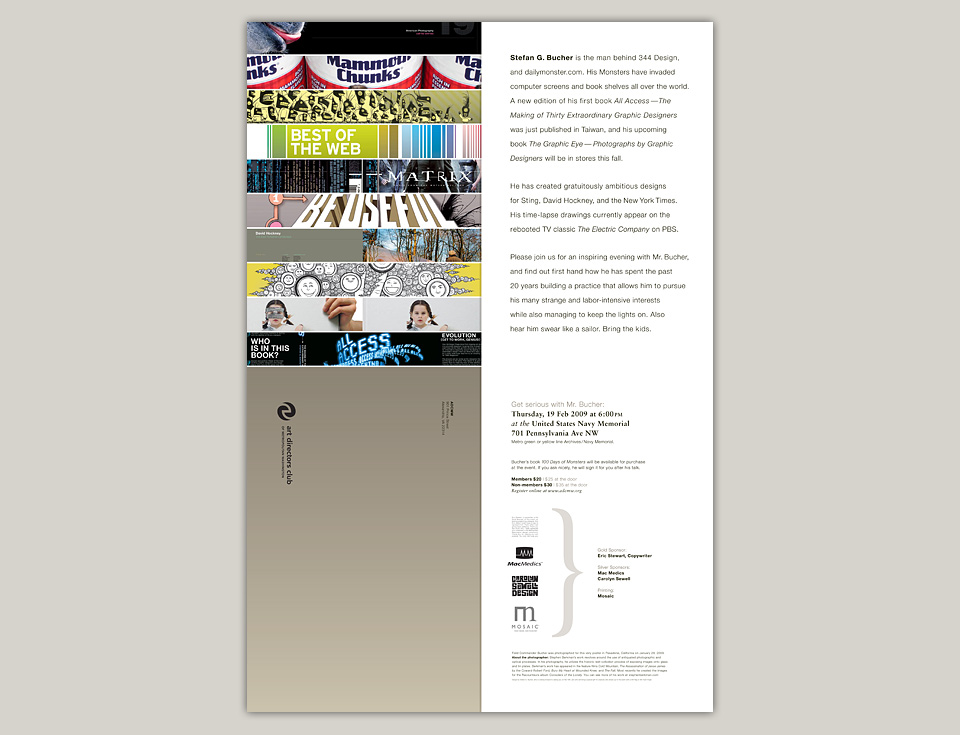The ADCMW POSTER

When I give a talk about my work, the organizers will sometimes ask me if I’d like to design a poster for the event. More often than not I’m too crazed to do it, but in this case I had the time and I had an idea. I had recently become reacquainted with the amazing photography of my friend Stephen Berkman, and it seemed a perfect opportunity to ask him for a favor.
The talk, hosted by the Art Directors Club of Metropolitan Washington, would take place at the United States Navy Memorial in Washington D.C. This somehow put me in mind of Edwardian and Victorian explorers giving presentations about their travels to dangerous and exotic places at the Reform Club or the Travellers Club. And what are my talks if not reports of my own travels and explorations? For this poster I would present myself as an intrepid discoverer of new lands.
This is where Stephen Berkman comes in. Stephen was my film teacher at Art Center, and he’s the person who introduced me to Tarsem. He’s also an incredible photographer, who specializes in ambrotypes, a process invented in the late 1800s that fixes a positive image on a glass plate using a wet plate collodion process. If you’ve seen the movie “Cold Mountain” or bought the second album by The Raconteurs, you’ve seen his work. If you get a chance to see an exhibit of his art, you must go! He’s crazy in the best way!
Ambrotypes look… well, they look just like that one of me on this page. I did a bit of retouching on my face and uniform, but all the wonderful frayed bits? That’s just the nature of the process. And if you’ve ever wondered why nobody in the late 19th century ever seemed to smile, here’s why: The exposure on an ambrotype is around 60 seconds. You can blink. It won’t matter. It won’t show up in the image. Try holding a smile for 60 seconds, though, without having it look like a creepy rictus.
As part of my photo session with Stephen I got to go through the whole process with him. My friend Suzanne and I polished the glass plates. We watched him coat them with a thin layer of collodion before dipping them in a solution of silver nitrate. After he took several exposures of me, we watched him develop the images in his darkroom.
The wet plate collodion process fixes the light parts of the scene. To see the full image you have to hold the plate before a dark background. As the picture is developed only the white parts appear as the developing liquid moves across the plate. If you’ve ever snickered at the thought of some poor native in the Amazon fearing that a photographer had stolen his soul, let me tell you: It’s a much more rational reaction than you think. It really does look like a ghost is appearing on the glass plate right before your eyes.
The whole thing was a great experience, and I’m grateful that Stephen agreed to let himself be pressed into service. I loved the result, and so did the organizers. (I also put a lot of my work on the back of the poster, so their audience would know what’s actually going on.) We had a full house in a beautiful venue, and it was a high point of that year’s little tour.
Oh, and the title? It’s a reference to “The Principal Navigations, Voiages, Traffiques and Discoueries of the English Nation” by Richard Hakluyt (1552–1609). I took out “Traffiques,” because three things are funnier than four things.
